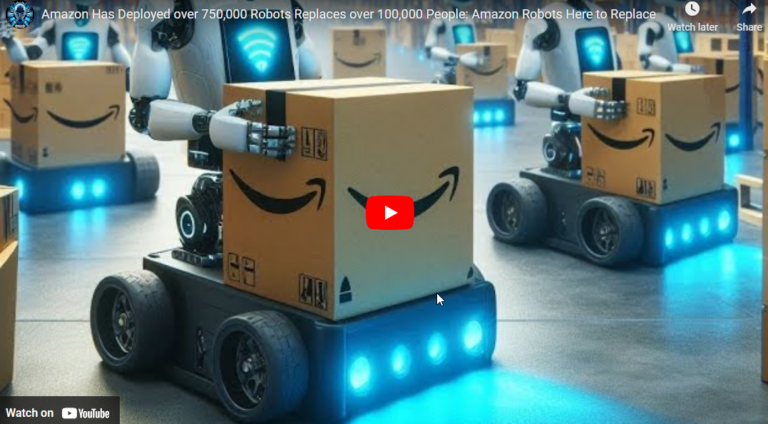Written by Michael Harris.
Amazon.com Inc., the world’s second-largest private employer, has dramatically increased its use of robotics. The company now employs more than 750,000 robots alongside its human workforce. Reports from Yahoo Finance and Tech Gig highlight this significant shift.
With 1.5 million employees, Amazon has reduced its human workforce by over 100,000 from its peak of 1.6 million in 2021. This reduction aligns with the rapid expansion of Amazon’s robotic fleet, which grew from 200,000 in 2019 to 520,000 in 2022.
While this move eliminates union grievances and salary negotiations, it raises questions about the future job market. Without jobs, who will buy the products?
Efficiency and Innovation with New Robots
Amazon’s robots, including new models like Sequoia and Digit, are designed to perform repetitive tasks, enhancing efficiency, safety, and delivery speed. Sequoia accelerates inventory management and order processing, while Digit, a bipedal robot developed with Agility Robotics, handles tasks like moving empty tote boxes.
These innovations aim to streamline operations and reduce costs. However, the increasing reliance on robots raises concerns about job displacement and the long-term impact on the workforce.
Balancing Technology and Employment
Amazon argues that robots have created new skilled job categories, aligning with a broader industry trend of integrating advanced technologies with human workforces. The company claims these robots enhance productivity and safety, but the rapid transition highlights the need for balance.
The replacement of human workers with robots could have significant social and economic implications. As automation advances, the challenge will be to ensure that displaced workers find new opportunities in an evolving job market.
Our Take
Amazon’s shift towards automation underscores the transformative impact of technology on the workforce. While robots can increase efficiency and reduce costs, they also threaten job security for many. The company and the broader industry must address the social and economic consequences of this transition. By investing in retraining and education, companies can help displaced workers adapt to new roles. However, without careful planning and consideration, the rapid automation could exacerbate unemployment and economic inequality, posing a significant challenge for society.


















